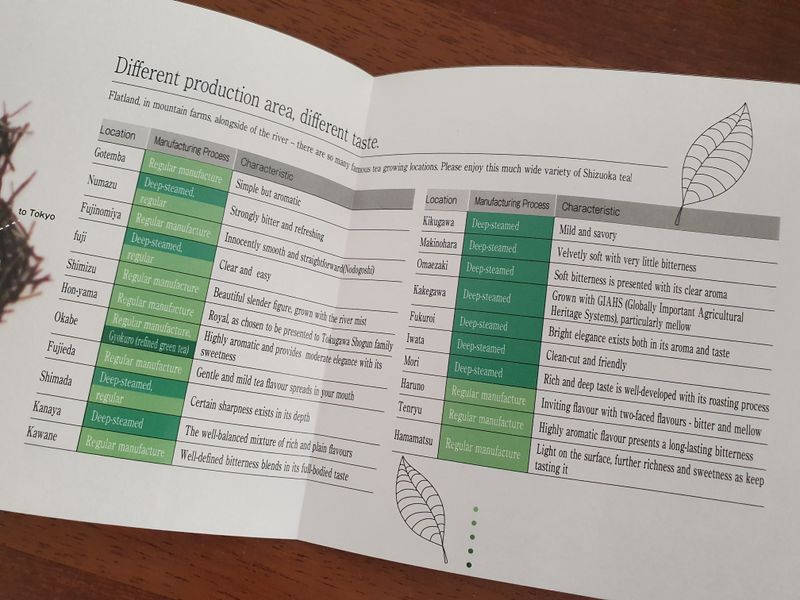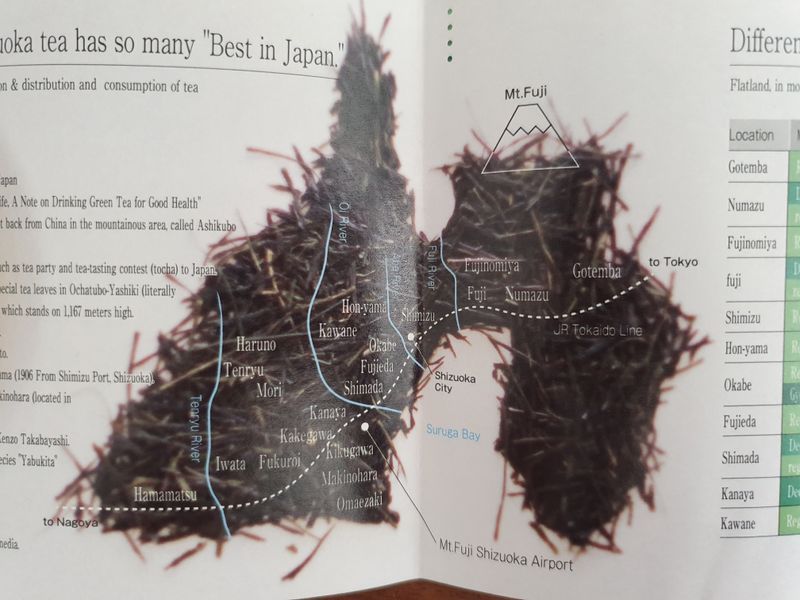Sep 16, 2020
Different regions, different tastes of tea in Shizuoka
I've taken a number of trips to Shizuoka Prefecture, and many of those visits have had a specific focus on tea. The region is revered for its tea production, but something that is less well-known is the difference between the tea varieties that come from the various growing areas.
If you're a tea aficionado like I am, this might interest you! It's a leaflet I received from the Shizuoka Prefecture Tea Council Chamber, which highlights some of the regional differences between locally produced teas.

This leaflet from the Shizuoka Prefecture Tea Council Chamber gives a glimpse into the different tastes that come from different tea production areas in the region.
When I'm just casually drinking tea, I don't always think about it a great deal - I might think to myself whether it tastes smooth or bitter, but I don't really go more in depth than that. This leaflet was a reminder to me that tea really does have so many dimensions, and that even in a relatively small geographic space the production area can truly impact the taste of the beverage.

Despite being a relatively small geographic region, Shizuoka has numerous tea growing regions - each with distinctly different approaches and flavors.
Some of my favorite tea-based memories in Shizuoka are from the towns of Mori and Kakegawa, and I've also purchased a lot of green tea online which come from the Fujieda region. Reading this leaflet definitely gives you an idea of what to expect from the region's different brews. Here's an insight into some of my favorites...
Mori
Mori’s tea manufacturing process focuses on deep-steaming of tea leaves, and means that the tea has a rich and deep well-developed taste. For tea from Mori, I recommend Osadaen Honten and Yamacho Meicha, both of whom have online stores if you can’t make it to Shizuoka in the near future.
Kakegawa
Kakegawa is one of Shizuoka’s most well-known tea production areas. The tea varieties here also have a high emphasis on deep-steaming, and the flavor is regarded as particularly mellow. For those who want to experience Kakegawa green tea, I recommend a trip to Ninomaru Chashitsu, Tea Time Maruha, or Kimikura Cafe. All three locations have a distinctly different atmosphere with locally-sourced teas available - you could fit a visit to all of them in one day, if you really wanted a tea-themed Kakegawa visit!
Fujieda
Another of Shizuoka’s most famous tea growing regions, Fujieda’s tea is known for its gentle and mild flavor. One of the most accessible places to try tea sourced from Fujieda is from the chain tea store Lupicia, which has many locations across the country. Their Fujieda sencha has a sweet, floral-like scent, and comes in both tea bag and loose-leaf varieties.
If you have a favorite variety of Shizuoka green tea, which area does it come from?
This post is supported by Shizuoka Green Tea Guide, one of City-Cost's Supporters helping City-Cost bloggers to enjoy life in Japan and engage in new experiences.



0 Comments